The Topic of Evolution in Secondary Schools Revisited
A new analysis of high school biology textbooks shows that emphasis on the topic of evolution decreased sharply in the decade ahead of the Scopes trial (1925). However, contrary to the conventional scholarly view [1], relative priority of the topic retuned to pre-Scopes levels by 1935 and did not decrease significantly in the decades that followed.
The graph below is based on direct review and analysis (see table) of 80 American high school biology textbooks published between 1907 and 1969.
RELATIVE PRIORITY OF THE
TOPIC OF EVOLUTION IN BIOLOGY TEXTBOOKS
1907-1969
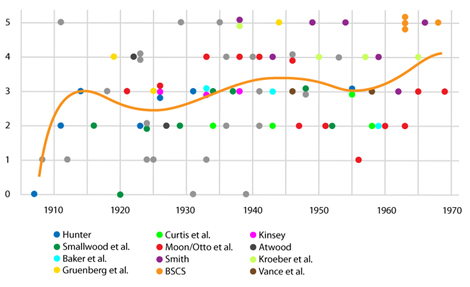
This graph was generated in Excel by plotting the data gathered through direct examination of 80 high school textbooks published between 1907 and 1969. It shows a clear decline in the priority of the topic of evolution in the years ahead of Scopes trial in 1925, restoration of the topic to earlier levels by 1935, a secondary decline from about 1945 to 1955 and then a rise into the 1960s.
The data strongly suggest that Scopes, or more accurately the general anti-evolution movement of the early 1920s, had an impact on the treatment of the topic of evolution in biology textbooks. However, the impact was temporary. By the later 1930s, the topic had returned to its pre-Scopes status, and remained at least at that status level through the 1960s.
The dip at toward the middle of the 1950s is almost entirely attributable to the popularity of one textbook, Moon’s Modern Biology (see article). It is interesting to compare this chart with a similar chart based on the same data set of the relative treatment of the topic of eugenics.

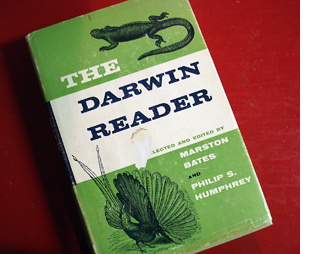 This neat bit of near-ephemera was among the first attempts to restore some of Darwin’s lost luster. Published in 1956, The Darwin Reader was a “best of” (and somewhat sanitized) collection of the writings of Charles Darwin edited by two professors at the University of Michigan, Philip S. Humphrey and Marston Bates. The editors noted that hardly anybody in the mid-1950s was reading Darwin, professionals included. They thought a good digest would help.
This neat bit of near-ephemera was among the first attempts to restore some of Darwin’s lost luster. Published in 1956, The Darwin Reader was a “best of” (and somewhat sanitized) collection of the writings of Charles Darwin edited by two professors at the University of Michigan, Philip S. Humphrey and Marston Bates. The editors noted that hardly anybody in the mid-1950s was reading Darwin, professionals included. They thought a good digest would help. discovered that their competitors had gotten the jump on them by publishing “acceptable” alternatives to texts like his and others not yet hip to the latest fundamentalist fashion.
discovered that their competitors had gotten the jump on them by publishing “acceptable” alternatives to texts like his and others not yet hip to the latest fundamentalist fashion.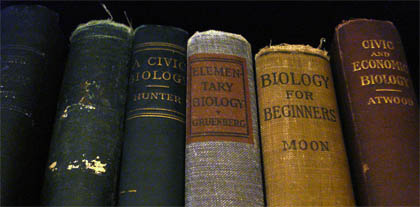
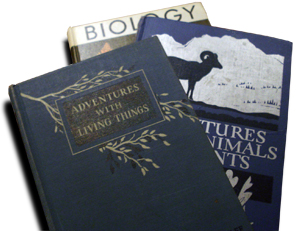 Published in 1938, Adventures With Livings Things was one of the most comprehensive, most far-sighted American high school biology textbooks of the century. It was also one of the most challenging. And in terms of commercial success and influence, perhaps one of the most disappointing.
Published in 1938, Adventures With Livings Things was one of the most comprehensive, most far-sighted American high school biology textbooks of the century. It was also one of the most challenging. And in terms of commercial success and influence, perhaps one of the most disappointing.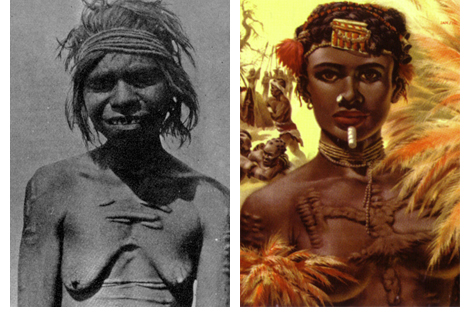
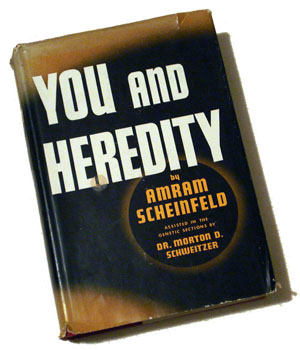 Amram Scheinfeld’s 1939 You and Heredity was a bestseller, a hit not only with the general public, but also with life scientists. It was rightly lauded as an excellent layperson’s primer on the state-of-the-art in human genetics and heredity, and a serious critique of the racist, nativist and even anti-homosexual sentiments common among early eugenics supporters.
Amram Scheinfeld’s 1939 You and Heredity was a bestseller, a hit not only with the general public, but also with life scientists. It was rightly lauded as an excellent layperson’s primer on the state-of-the-art in human genetics and heredity, and a serious critique of the racist, nativist and even anti-homosexual sentiments common among early eugenics supporters.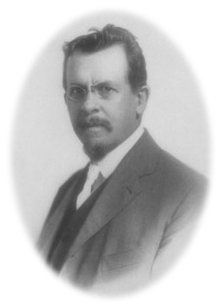 After authoring
After authoring